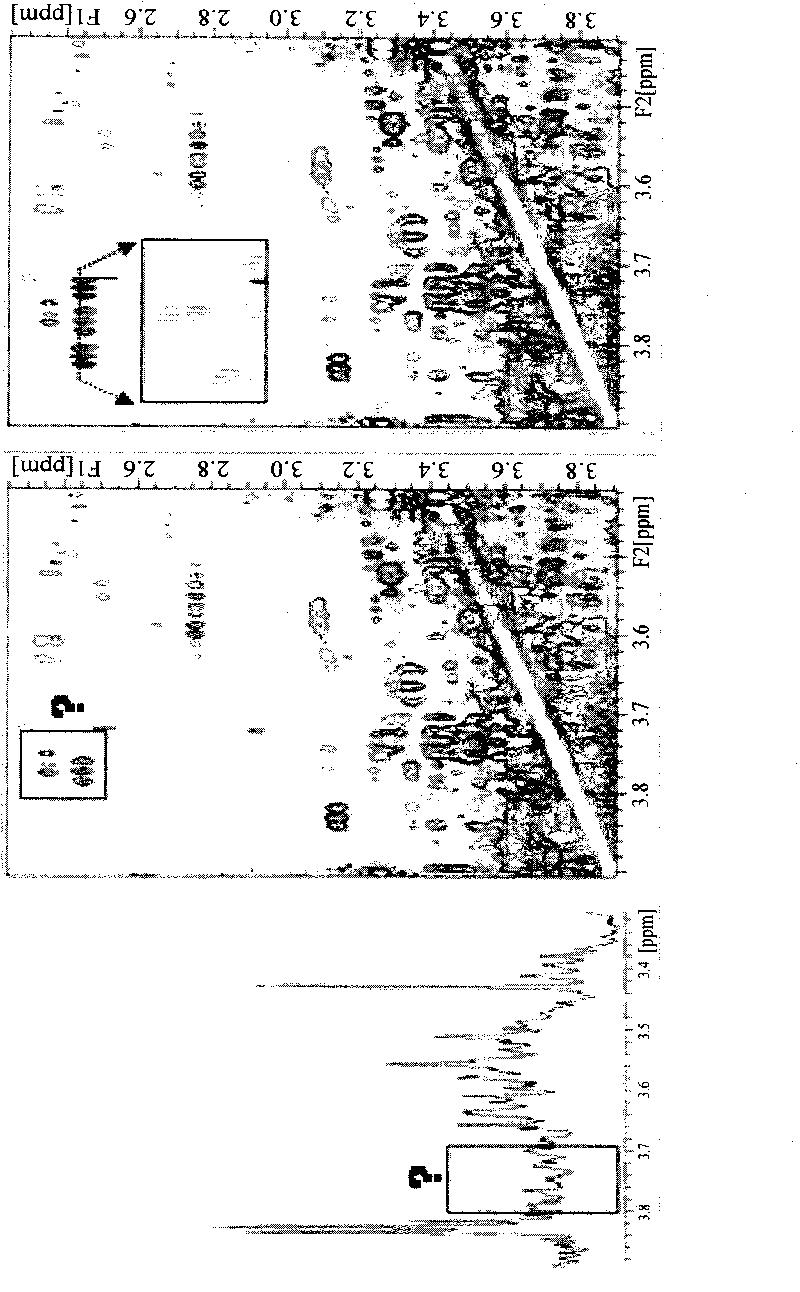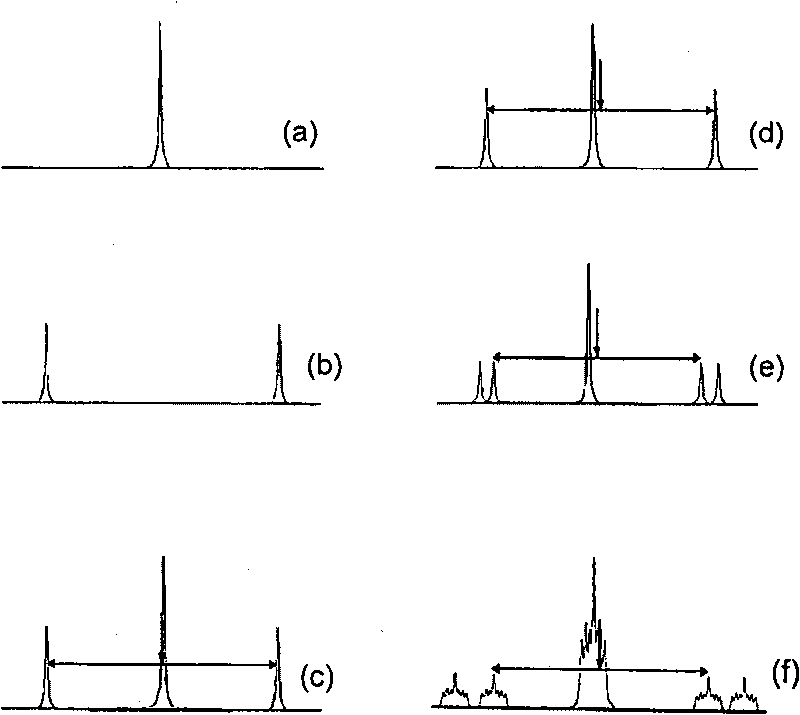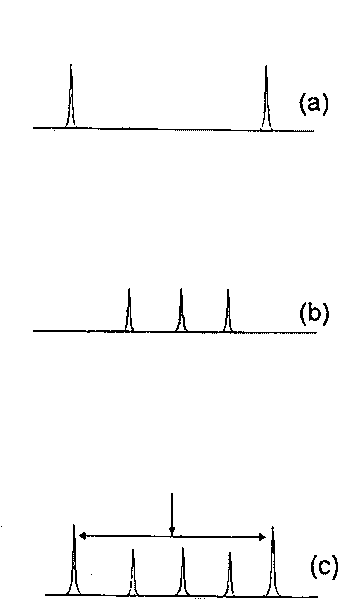A method for detecting a target substance by nuclear magnetic resonance
A target substance, nuclear magnetic resonance technology, which can be used in magnetic resonance measurement, measurement using nuclear magnetic resonance spectrum, and analysis using nuclear magnetic resonance, etc., and can solve problems such as impossible and quantitative difficulties.
- Summary
- Abstract
- Description
- Claims
- Application Information
AI Technical Summary
Problems solved by technology
Method used
Image
Examples
Embodiment 1
[0044] An overview of the different spin system topologies that can be used to identify and quantify known target species in dense NMR spectra is shown in figure 1 and figure 2 middle. In these examples, the detected spins (integer or half-integer, such as spin 1 / 2) are shown in bold in the following structural formulas 1 H or spin 1 2 H) leads to an NMR singlet in the case of the target substance. By changing the sample conditions (pH, salt, T), the signal of interest can be shifted to non-overlapping spectral regions. However, it is not always straightforward to identify shifted lines. In an isotopically labeled target substance, the same spin interacts with the isotopic nucleus substituted therein. This interaction can be used to identify the signal of interest and quantify the amount of the unlabeled counterpart molecule of the same type.
[0045] Particularly, figure 1 The case where the isotopes are labeled as spin 1 / 2 nuclei is shown. Starting with an unlabeled...
Embodiment 2
[0066] The assay described above was used to detect glycine in cerebrospinal fluid (CSF) collected from the cisterna magna of adult Wistar male rats (under anesthesia with 3-5% gaseous isoflurane). Immediately after collection, CSF was stored at -80°C. Mix an appropriate aliquot of CSF with 6 μL of 8.5N NaOD, 10 μL of 1 mM 13 C-glycine (both carbon atoms are used 13 C mark) and 20% D 2 A solution of O in 80% water was mixed to give a total volume of 200 μL. After vortexing for 30 seconds, the solution was centrifuged at 13000 rpm for 1 minute and the supernatant was transferred to a 3 mm NMR tube. Samples were freshly prepared prior to measurement.
[0067] Equipped with a 5mm cryoprobe (CryoProbe) and used XWINNMR 3.5 (Bruker BioSpin, The measurement of CSF on the Bruker Avance-II 600MHz instrument controlled by Switzerland) 1 H NMR spectrum. Each sample was manually tuned and matched, and shimmed with the manufacturer's gradient shimming program. 32k data points wer...
Embodiment 3
[0074] Figure 4 A schematic diagram of the quantification strategy applied to two-dimensional NMR spectroscopy is shown in . Depending on the sample conditions, the target compound to be quantified has a signal with a chemical shift of 3.7-3.8 ppm. One-dimensional obtained on biological matrices 1 H NMR spectrum ( image 3 , left panel) exhibit severe signal overlap. Applying two-dimensional TOCSY spectroscopy (cf. A. Bax and D. G. Davis (1985), J. Magn. Reson. 65, 355), the situation is improved by isolating off-diagonal signals of known spin system topology , but the two triplet signals marked by small boxes are still unclear ( image 3 , middle panel). only in 13 After the peak formation of the C-labeled substance ( image 3 , right panel), the triplet of interest was clearly identified as the lower one, which is now clearly a doublet as a triplet. by right image 3 Integrating the NMR triplet signal in the extracted line shown in the small box on the right, the r...
PUM
| Property | Measurement | Unit |
|---|---|---|
| molecular weight | aaaaa | aaaaa |
Abstract
Description
Claims
Application Information
 Login to View More
Login to View More - R&D
- Intellectual Property
- Life Sciences
- Materials
- Tech Scout
- Unparalleled Data Quality
- Higher Quality Content
- 60% Fewer Hallucinations
Browse by: Latest US Patents, China's latest patents, Technical Efficacy Thesaurus, Application Domain, Technology Topic, Popular Technical Reports.
© 2025 PatSnap. All rights reserved.Legal|Privacy policy|Modern Slavery Act Transparency Statement|Sitemap|About US| Contact US: help@patsnap.com



